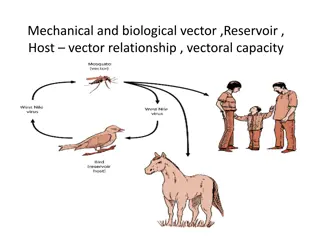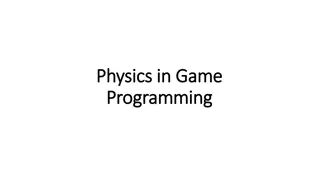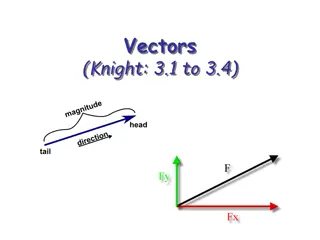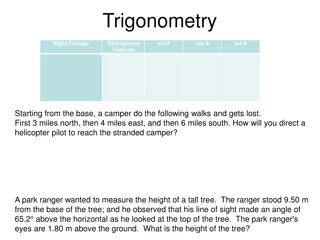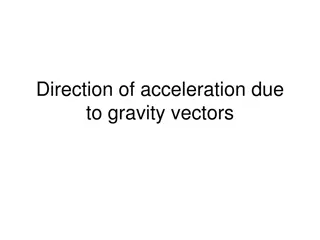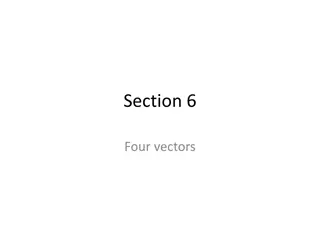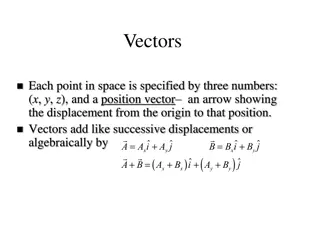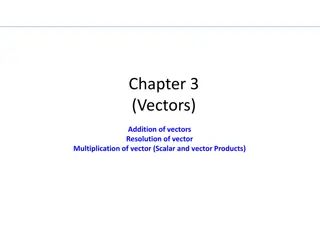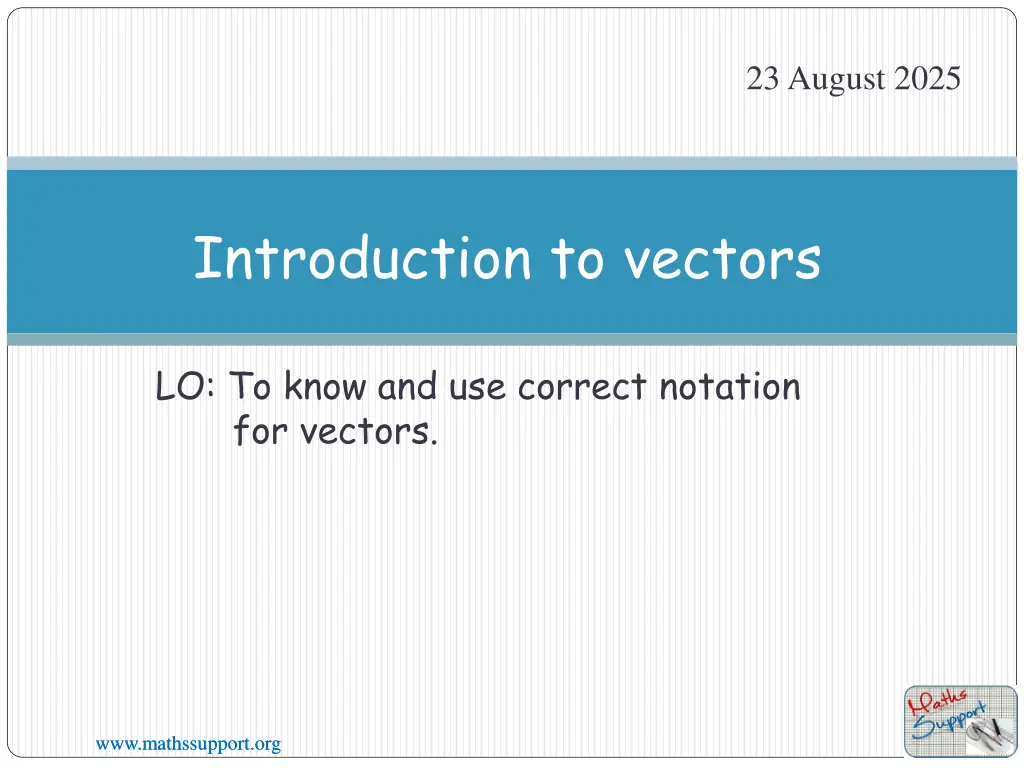
Understanding Vector Notation
Learn about vectors and scalars, how to represent vectors using directed line segments and unit vectors, and understand vector components in different dimensions. Explore the correct notation for vectors and grasp the concept of magnitude and direction. Enhance your knowledge of vectors in three-dimensional space with this informative guide.
Download Presentation

Please find below an Image/Link to download the presentation.
The content on the website is provided AS IS for your information and personal use only. It may not be sold, licensed, or shared on other websites without obtaining consent from the author. If you encounter any issues during the download, it is possible that the publisher has removed the file from their server.
You are allowed to download the files provided on this website for personal or commercial use, subject to the condition that they are used lawfully. All files are the property of their respective owners.
The content on the website is provided AS IS for your information and personal use only. It may not be sold, licensed, or shared on other websites without obtaining consent from the author.
E N D
Presentation Transcript
23 August 2025 Introduction to vectors LO: To know and use correct notation for vectors. www.mathssupport.org www.mathssupport.org
Vectors and scalars A vector is a quantity that has both size (or magnitude) and direction. Examples of vector quantities are: displacement velocity weight A scalar is a quantity that has size (or magnitude) but not direction. Examples of scalar quantities are: distance speed mass www.mathssupport.org www.mathssupport.org
Representing vectors A vector can be represented using directed line segments with an arrow on it. For example, B A The magnitude of the vector is given by the length of the line. The direction of the vector is given by the arrow on the line. www.mathssupport.org www.mathssupport.org
Representing vectors 5 B 4 a 3 2 A 1 0 6 7 8 5 1 2 3 4 This vector goes from the point A to the point B. We can write this vector as AB. Vectors can also be written using single lower case bold letters. For example, we can call this vector a. When this is hand-written, the a is written as or a a www.mathssupport.org www.mathssupport.org
Representing vectors 5 B 4 3 3 2 A 1 6 4 0 6 7 8 5 1 2 3 To go from the point A to the point B we must move 6 units to the right and 3 units up. We can represent this movement using a column vector. This is the horizontal component. It tells us the number of units in the x-direction. 6 3 AB = This is the vertical component. It tells us the number of units in the y-direction. www.mathssupport.org www.mathssupport.org
Representing vectors 5 B j 4 3 3j j 2 j A 1 i i i i i i 6i 0 6 7 8 5 1 2 3 4 The vector can be represented in unit vector form. The unit vector in the direction of x-axis is i and is a vector of length 1 unit in the direction of x The base vector in the direction of y-axis is j and is a vector of length 1 unit in the direction of y 6 3 We can write as 6i + 3j www.mathssupport.org www.mathssupport.org
Representing vectors We can also think about objects that move around in a three dimensional space. We can represent a vector in three dimensions. In three dimensions the unit vector in the direction of the z-axis is k. So,kand is a vector of length 1 unit in the direction of z. So now we have three components 3 We can write as 3i 2j + k -2 1 Represents a movement of 3 units in the positive x-direction, 2 units in the negative y-direction and 1 unit in the positive z-direction The vectors, i, j, k are called base vectors www.mathssupport.org www.mathssupport.org
Unit vectors The unit vector in the direction of x-axis is i . 1 0 0 1 0 i = i = in three dimensions In two dimensions The unit vector in the direction of y-axis is j . 0 1 0 0 1 j = j = in three dimensions In two dimensions 0 0 1 In three dimensions the unit vector in the direction of z-axis is k . k = www.mathssupport.org www.mathssupport.org
Representing vectors Examples: 5 a = Writein unit vector form -4 a = 5i 4j Writeb = -2i + 3k in column vector form -2 0 3 Here the coefficient of the jcomponent is zero b = www.mathssupport.org www.mathssupport.org
Equal vectors Two vectors are equal if they have the same direction and the same magnitude. Their i, j, k components are equal too Their column vectors are equal. Which of these vectors are equal? Are pointing in the same direction Have the same magnitude a= b= g a g d c e f b www.mathssupport.org www.mathssupport.org
Negative vectors What we can say about vector a and c?. Have the same magnitude Are pointing in different directions a c 2 3 c is called the negative vector -2 -3 - c and so a= c = a = a g d c e f b www.mathssupport.org www.mathssupport.org
Parallel vectors What we can say about vector a, d and e?. Have different magnitudes Two vectors are Parallel if one is a scalar multiple of the other Are pointing in the same direction 1 4 6 2 3 e = d = a = 1.5 We can say that a= kb 1 2 and so a= c we can say that the vectors are parallel and a= d 2e a g d c e f b www.mathssupport.org www.mathssupport.org
Thank you for using resources from A close up of a cage Description automatically generated For more resources visit our website https://www.mathssupport.org If you have a special request, drop us an email info@mathssupport.org www.mathssupport.org www.mathssupport.org




